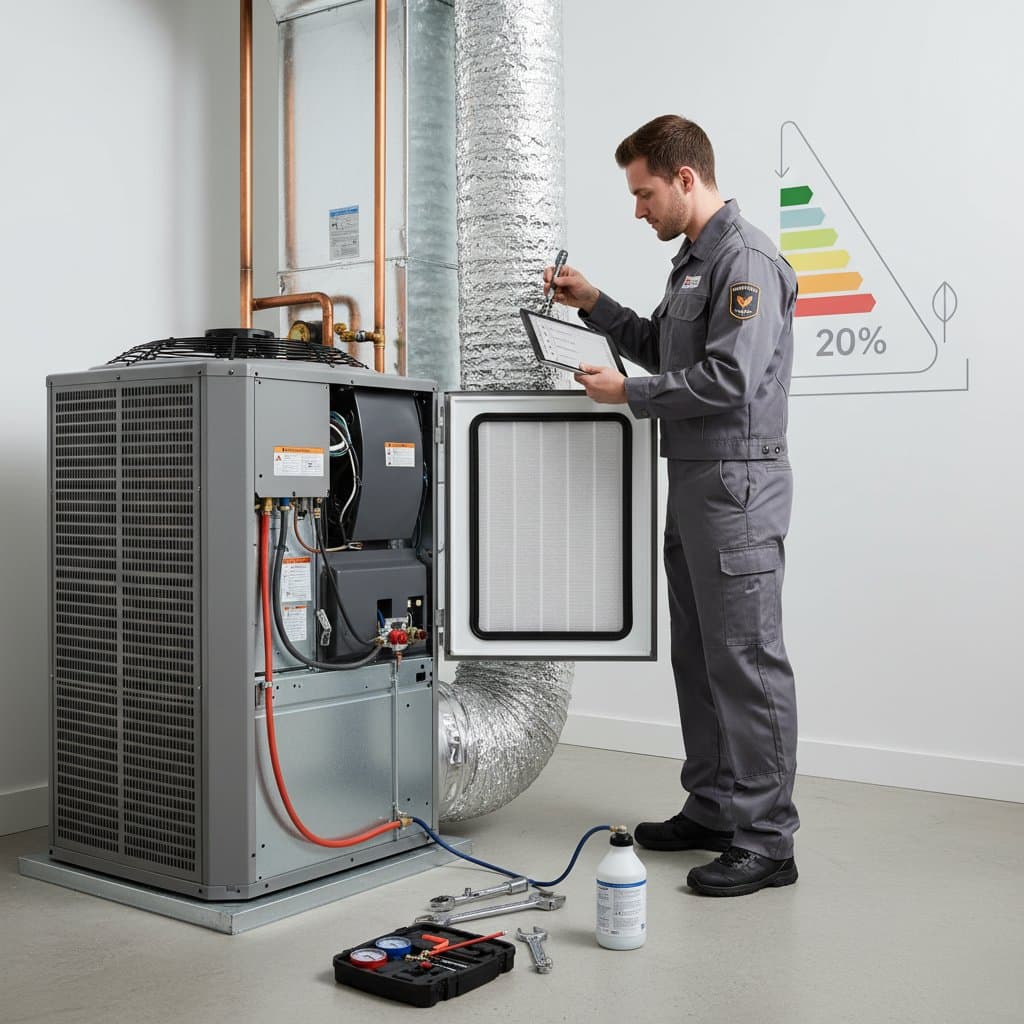The Value of Professional AC Tune-Ups for Summer Comfort
Summer heat transforms an air conditioner from a convenience into an essential system for home comfort. A sudden failure during peak season disrupts daily life and incurs high repair costs. Professional tune-ups maintain optimal performance, avert breakdowns, and ensure consistent cooling. HVAC experts note that properly serviced units operate with 20 percent less energy consumption and enjoy extended operational life compared to neglected systems.
Essential Reasons for AC Tune-Ups
Homeowners often address air conditioning issues only after problems arise. Preventive care proves more effective, as accumulated dust, debris, and component wear gradually impair efficiency. An annual tune-up restores airflow, enhances indoor air quality, and decreases utility expenses. Data from consumer surveys indicate that regular servicing eliminates nearly 50 percent of unanticipated cooling system failures.
Tune-ups also mitigate humidity-related concerns. Clogged coils or drainage lines trap moisture within the unit, fostering mold growth and unpleasant odors that spread through ductwork. Thorough inspections maintain dry, clean air circulation for a healthier living environment.
Components of a Comprehensive AC Tune-Up
Technicians adhere to a systematic protocol during a tune-up to detect minor faults early. The process typically addresses these key areas:
- Air filters: Cleaning or replacement optimizes airflow and reduces strain on the system, lowering electricity demands.
- Condenser and evaporator coils: Thorough cleaning enhances heat transfer, improving overall cooling capacity.
- Refrigerant levels: Verification and adjustment prevent inefficient operation and compressor damage from low pressure.
- Electrical connections: Inspection and securing of wiring avoids hazards like shorts or intermittent power issues.
- Thermostat calibration: Adjustment ensures precise temperature regulation and minimizes excessive on-off cycles.
- Drain lines: Flushing removes blockages to eliminate leak risks and water damage.
- Blower components: Lubrication of fans and inspection of belts identify wear before failure occurs.
For most residential setups, the service requires one to two hours, influenced by unit location and complexity.
Weighing Costs Against Long-Term Savings
Professional AC tune-ups range from 75 to 200 dollars, depending on location, unit capacity, and service depth. Many providers offer bundled plans for heating and cooling maintenance at reduced rates. Although the expense may appear optional for a functioning system, neglect frequently results in substantial future outlays. Compressor replacement alone exceeds 1,200 dollars, while a complete system overhaul surpasses several thousand dollars.
Budget-minded individuals can perform preliminary tasks like filter swaps, debris removal from exterior units, and thermostat battery checks to shorten professional visits. However, tasks involving refrigerant or electrical systems demand expert intervention for safety and compliance.
Practical DIY Maintenance Tasks
Between scheduled services, homeowners can implement these straightforward measures to sustain system performance:
- Replace air filters every one to three months, adjusting frequency based on household activity and local air quality.
- Vacuum register vents and return grilles regularly to eliminate dust accumulation that impedes circulation.
- Maintain a minimum two-foot clearance around the outdoor condenser unit to facilitate unrestricted airflow.
- Inspect refrigerant line insulation for damage and repair or replace as necessary to prevent energy loss.
- Monitor for atypical sounds, such as rattling or humming, which may indicate loose components or motor issues.
These practices minimize efficiency losses and contribute to prolonged equipment durability.
Indicators Requiring Professional Attention
Specific symptoms signal the need for expert evaluation beyond routine upkeep. Warm air output, frequent cycling, or unusual grinding noises warrant immediate scheduling. Visible water accumulation near the indoor unit suggests drain clogs or coil freezing. Sudden increases in energy bills without usage changes often reflect declining system efficiency.
Qualified technicians employ specialized instruments to assess refrigerant charge, airflow rates, and electrical integrity. Such diagnostics uncover hidden problems, enabling timely corrections that prevent major disruptions.
Strategies for Ongoing System Reliability
Consistency forms the foundation of effective maintenance. Plan tune-ups in early spring, ahead of intense heat, to prepare the system fully. Maintain a visible record near the thermostat or in a dedicated home log, noting service dates and upcoming filter changes.
When selecting a service provider, inquire about technician credentials, service warranties, and performance assurances. Reputable firms detail their training protocols through professional affiliations.
Prioritizing air conditioner upkeep safeguards against urgent repairs and delivers reliable comfort. This approach sustains low energy consumption, promotes clean indoor environments, and enhances summer enjoyment.





